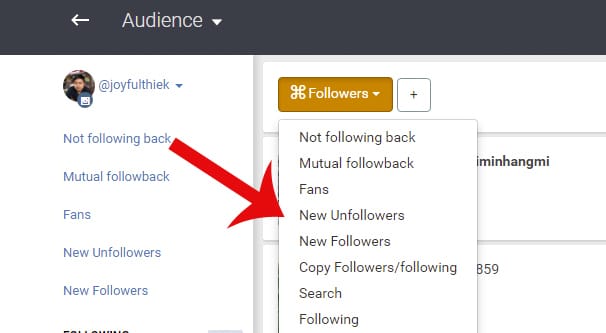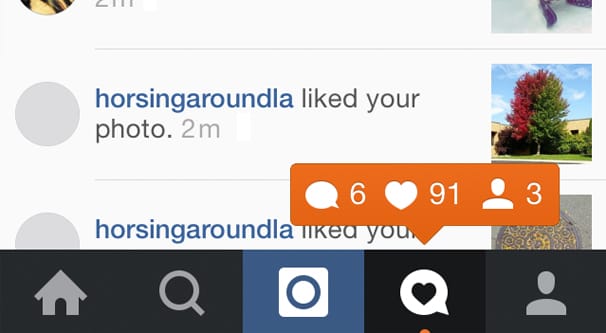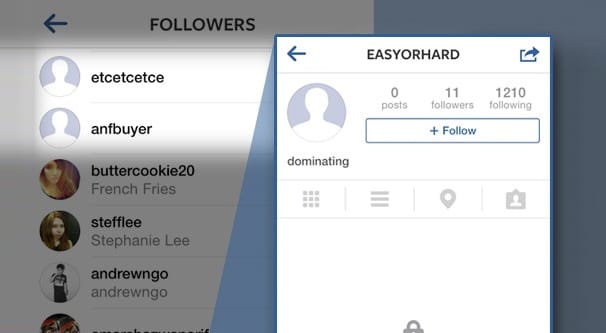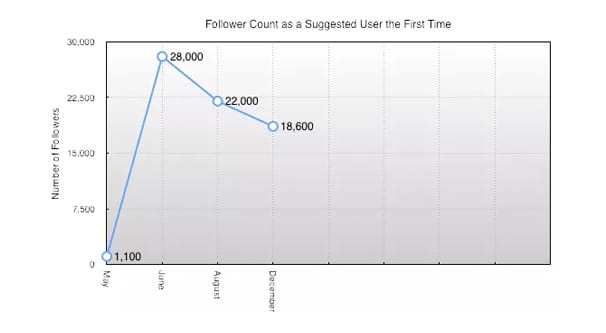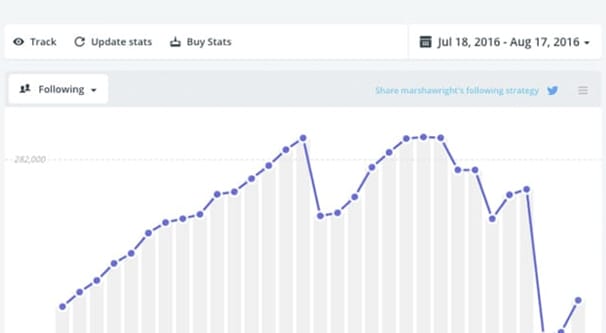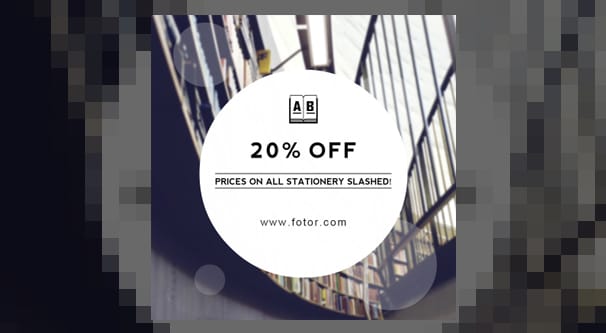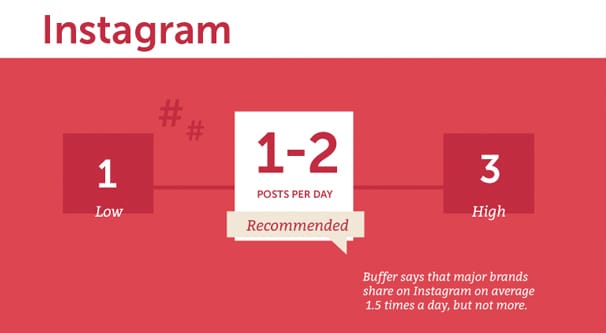 Written by ContentPowered.com
Written by ContentPowered.com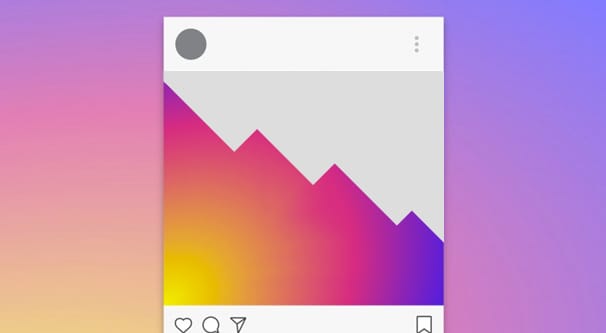
A couple years ago, Forrester research publishes a study that concluded the engagement rates for accounts on Instagram was something like 10x that of Twitter and 20x that of Facebook. Needless to say, about a billion businesses flocked to Instagram over the following years, in an attempt to take advantage of that engagement rate.
As you might expect, it’s been successful and valuable for some brands, and very much not for others. The influx of brands and their lower quality posting has dropped engagement rates overall, making it harder for everyone to succeed. Meanwhile, all of the usual social exploitation – the fake followers, the sale of shout-outs, the official and unofficial advertising – has blossomed.
These days, as a brand, it can be difficult to grow and keep followers. When you find yourself losing followers, here are some possible causes you can double-check.
1. Your Content Isn’t Engaging
Having content that is extremely engaging is perhaps the number one most necessary thing you can do for Instagram marketing. Engagement isn’t quite as necessary on Instagram as it is on Facebook, where it can completely dominate the algorithm. Instagram is a lot more like Twitter, where engagement helps bring in new users.
Essentially, attractive content on Instagram is a lot more likely to be explored by the average user. Many people browse hashtags to look for content they enjoy. When your content shows up in a hashtag feed, you have an opportunity for any user who browses that feed to click and see the post in full size, read the description, and even follow your account.
Conversely, content that isn’t good enough is going to lose you followers. Like Twitter, users on Instagram have a personal feed of content from all of the accounts they follow. If your content isn’t suitably interesting, they’re liable to wonder why they followed you in the first place and will revoke their follow so they don’t have to keep seeing your content.
One of the biggest causes of this follower attrition is the gradual shift in focus of your content. If you started out by primarily posting activity photos, pictures of people lighting weights and competing at sports, but you eventually shifted to more product-focused images, anyone who followed you for your activity photos will gradually disappear. More abrupt shifts in focus do the same thing, but more rapidly.
So what kind of content can you post to keep your followers engaged with your brand? There are a lot of possible options, and you’re going to have to experiment to see what sticks the best with the people who already follow you. At the same time, you need to strike a balance between retaining existing audience members and attracting new ones.
Here are some potential types of posts you can consider:
- Actionable ideas. A fashion site can post outfits that work together. A tech site can post PC build recommendations or software they like. An active lifestyle site can post yoga poses or exercises their followers can do for a bit of household fitness.
- Photos of admirable people. Your audience probably respects certain people related to your industry. You can post images of them in action, and get commentary about their lives.
- Behind the scenes photos. People have curiosity about how their favorite brands do their thing. You can showcase the making of a product, some element of distribution, and anything else that doesn’t reveal trade secrets and could be interesting to your fans.
I pulled those ideas from Vend; you can read them and a dozen others here.
2. Your Followers are Fake
Almost every novice marketer or brand owner has the same thought eventually. “I wonder if I can spend money to make this easier?” This leads you to Google whether or not you can buy followers or engagement, and all of the discussion around the web.
There are essentially three ways to spend money to gain followers on any social network, Instagram included.
- Use the official ads program. Instagram ads are run through the Facebook ads manager. You have a wide range of targeting options, but your ads have to go through the approval process and you have to put in the work to optimize them. They’re also rather expensive, compared to the other two options.
- Use an unofficial third party seller with a positive reputation. These sites are essentially showing your account and posts to their own custom audiences, like an ad network of their own. It’s cheaper than official ads, but you have a lot less control over the audience you receive.
- Use a cheapo mass follower seller, like someone on Fiverr or one of the bot programs that “earns” you followers. These are the cheapest option of all, and are thus far more attractive than they should be. The problem is, they’re also likely to bring in fake accounts and bots more than anything else.
If you’re looking to spend a few bucks and get a few hundred followers, the third option is very attractive. The problem, though, is that those fake followers aren’t doing anything for you. They make your follower count look larger, but anyone who cares to can easily tell they’re fake. It’s incredibly easy to check. At the same time, those users aren’t engaging with your posts, they aren’t benefitting your account, and they’re liable to disappear.
This is where the decreasing follower count comes in. Instagram is fairly aggressive with identifying and purging fake accounts. The biggest fake follower purge happened in 2014, with millions of fake accounts disappearing overnight. Since then, there have been a constant series of mini-purges as hundreds or thousands of fake users are regularly removed. There will always be follower attrition when you’re buying fake accounts to follow you.
I always recommend going with options one or two, possibly a mixture of both if you have the budget for it. Option three will only boost one number on your account, and even then, not for long.
3. Instagram Algorithmic Filtering
When I talk about Instagram being aggressive with their anti-fake algorithms, I mean it in more ways than one. One other thing that Instagram does is puts limitations on the actions users can take throughout a day. One such limitation is on the “follow” action.
Information varies about what the limitations are, which makes sense for Facebook-controlled sites. Essentially, they’re using algorithms and a variety of factors to determine how detrimental an action might be. If an account is following hundreds of other accounts every hour, Instagram is fairly likely to block that account, at least temporarily, from following anyone else.
This is primarily because of something called follower churn, or the follow/unfollow method. When an account follows hundreds of other people, it’s typically fishing for follows in return. It then unfollows all of the people who didn’t follow back, and repeats the process to grow. Instagram wants to minimize this kind of exploitation, so they filter people using it.
The more aggressively you churn followers, the more likely your account is to be filtered. The more people you try to follow in an hour, the more likely you are to be filtered. The more times you’ve been filtered in the past, the lower the bar is before you’re filtered again. There are also factors that include the kinds of content the people you follow are posting. One person following a whole bunch of accounts that all use the same handful of hashtags is more likely to be legitimate interest than one person following anyone they come across.
Now, turn all of this information on its head and you can see how you might lose followers. If other accounts have been following you because they’re fishing for follows in return, you’ll lose them, often whether you follow back or not. If they follow you and are filtered by Instagram, the site will often undo their follows as an abusive action. It’s okay in that, for the most part, the follows you lose aren’t real follows and aren’t going to benefit you anyway, but it can still be annoying to see the number keep dropping.
4. Your Content is Too Promotional
Too much promotion falls into the same general category as #1 on this list. When your content is to focused on sales and not enough on interest, people are going to wonder why it’s in their feed. If it’s an ad, sure, that’s acceptable. They may not like it, and they may choose to hide or block you if they don’t like the ad, but that’s a risk you take running ads. You need to optimize your ads to better fit your audience to avoid that kind of situation.
Too much promotion in your organic posts means that your followers are essentially just seeing ads that aren’t being paid for in their feeds. It’s a much easier process to block an ad they don’t like when it’s actually an organic post. If they happened to be following you, they’re going to unfollow you, because that’s not the kind of content they want to see. It’s a little more acceptable if they’re seeing it in a hashtag, but at the same time, that’s not the kind of content they want to see, so it’s not the kind of account they’re going to follow.
What constitutes undue promotion? It’s a tricky line to draw. In general, what you should do is look at every post and ask yourself what the user is going to get out of it. Is it something that can make their life better? Is it something that can teach them an interesting fact? Is it something that they’ll like due to association with another person they like?
If your answer is “it’s something to do with my product, in the hopes my followers will buy it” you’re being too promotional. The general idea is that you want to be as valuable to your followers as possible. Even if the “value” you provide is simply interesting images they’d like to see.
5. You’re Posting Too Frequently
Posting too frequently is one of the cardinal sins of most social networks. Only Twitter really seems resilient to frequent posting, with accounts like William Gibson tweeting dozens of times per day, or the reply-chain “tweetstorm” format that is oh-so-popular even with the longer character limit today.
How often is too often? It depends on your audience, primarily. If you post four times a day and you’re growing in both followers and engagement, that’s fine. If you post five times a day and you start losing followers, that’s too often.
Obviously, a lot of studies have been performed about exactly this question. CoSchedule looked at 14 different studies and aggregated the results, which I’ll discuss here.
The general “ideal” frequency as aggregated by these studies is 1-2 posts per day. If you’re a particularly huge and active account, you may be able to get away with more. If your audience doesn’t generally follow a lot of people, you might want to stick with one.
In general, you never want to drop below one post per day. One post per day is the minimum to stay relevant and on everyone’s minds. You want to be a constant presence, but not in an overly noticeable way.
One to two posts per day is enough to maintain relevance without being deemed a spammer. If you’re posting more than 2-3 times per day, you have to make sure the quality of your content supports it. The more you post, the more people are going to notice that you’re flooding their feed. If all you post is motivational quotes on an inspirational image, maybe people aren’t going to want that when they’re primarily looking for interesting photographs.
There’s also the potential issue of posting too often earning you reports for spamming. If too many people decide your content is too low quality, and they report and block you, Instagram is liable to restrict your account as well. That’s not directly losing you followers, but, you know. It’s not something you want to do.

